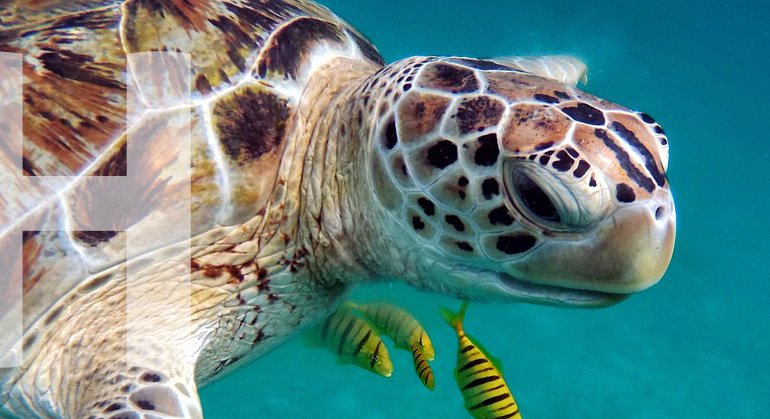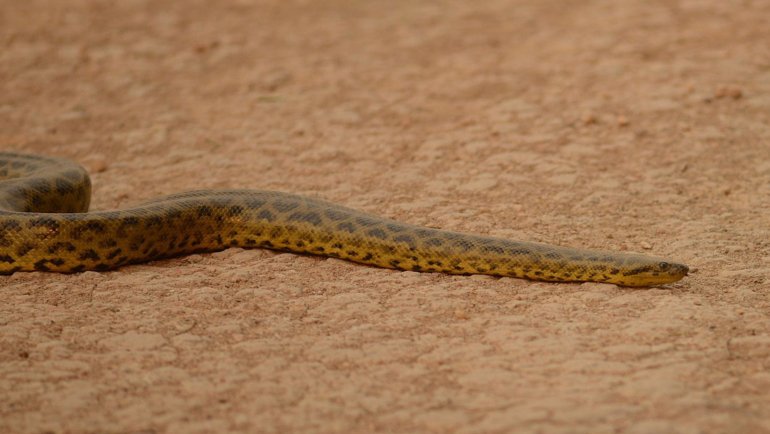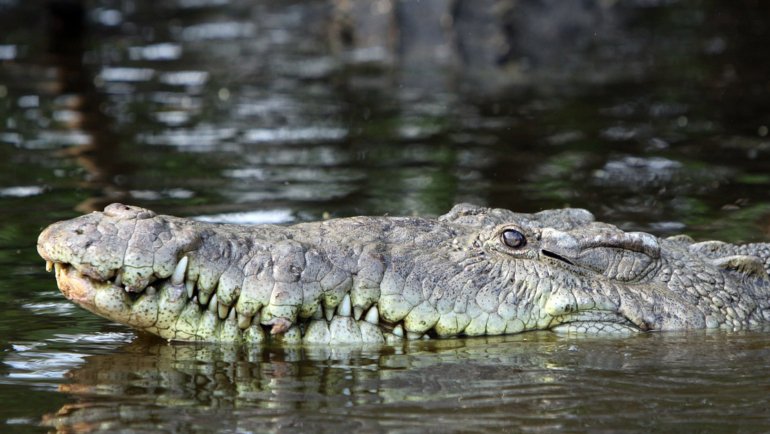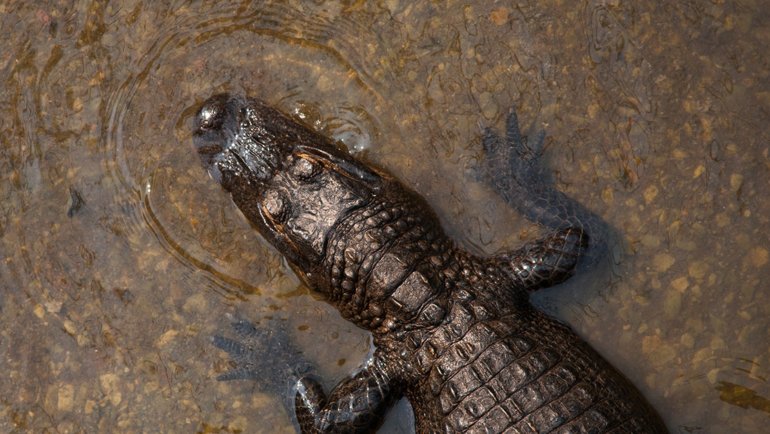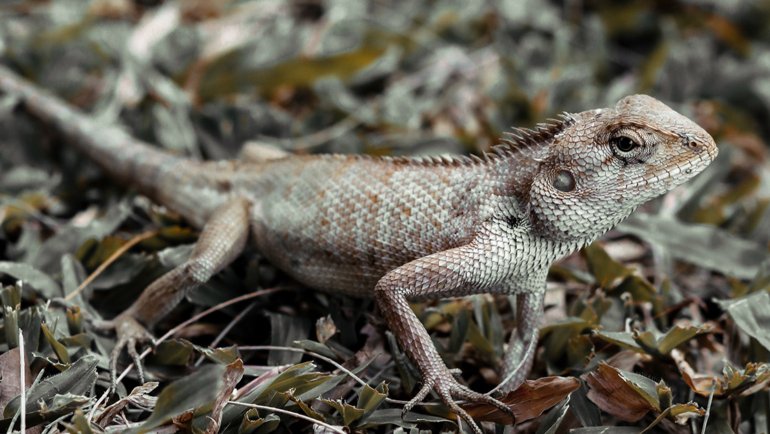Iguanas are large lizards belonging to the family iguanidae and characterized by a robust elongated body, spiky scales on their backs, and a flap of skin underneath their head called a dewlap. They are native to North and South America and got their name from the Tiano word “iwana“.
There are different types of iguanas, and we will talk about some of them in this article.
Top 12 Types of Iguanas
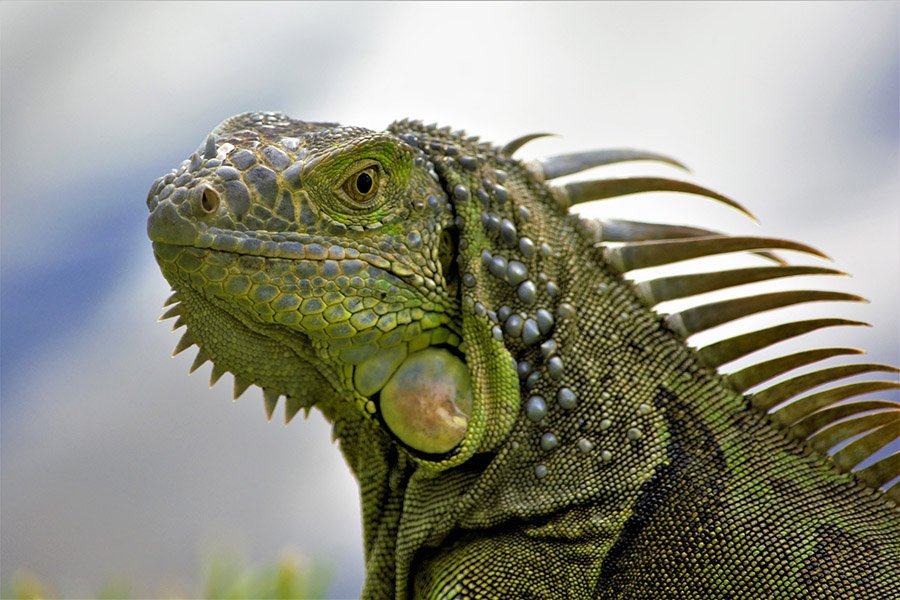
Green Iguana
Easily the most popular iguana species, the green iguana (Iguana iguana) is commonly used as a pet in many American homes. It is in the large size range among iguanas, with adults reaching 6-7 feet in length, and can weigh as much as 20 pounds.
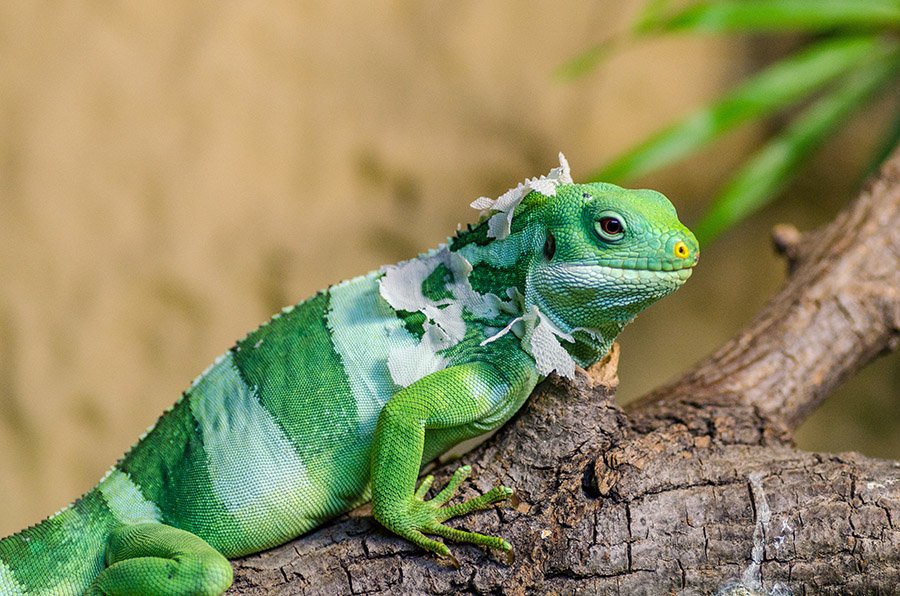
Lau Banded Iguana
A more attention-grabbing cousin of the green iguana, the Lau banded iguana (Brachylophus fasciatus) is primarily green in color with white, blue, or yellow bands. It is native to the Fiji Islands and even appears in the local currency.
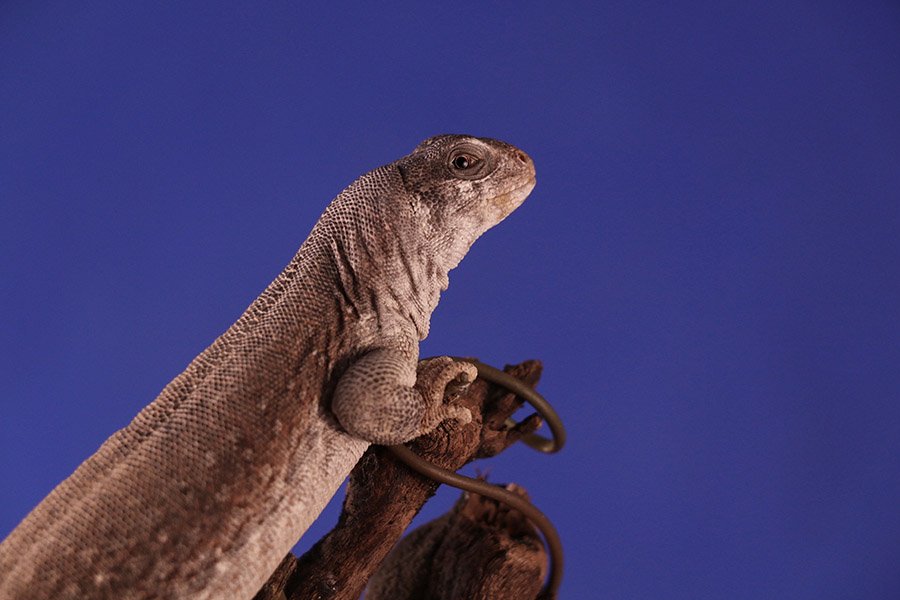
Desert Iguana
The desert iguana (Dipsosaurus dorsalis), in so many ways, differs from its tropical cousins. Found in arid regions of North America like Mexico and the Southern US, it has adapted to its harsh habitat.
Rather than the colorful appearance of the green and Lau banded iguanas, the desert iguana comes in tan, rusty brown, gray, and black.
West Indian Rock Iguanas
Varying in size, color, and appearance, the West Indian rock iguanas can be quite a handful. They actually are a group of 9 different species. Ranging from 2-5 feet long, common colors are brown, gray, and black.
They originated from the West Indies and are physically intimidating with beefy features, scaly skin, and wide jowls. Although they do not climb as much as green iguanas, they also require a large enclosure with climbing surfaces.
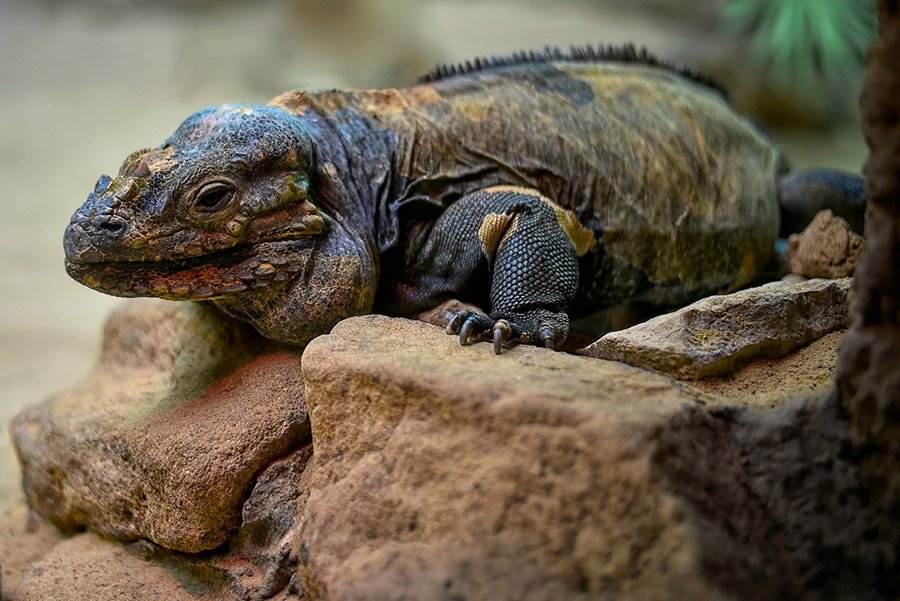
Rhinoceros Iguana
The rhinoceros iguana (Cyclura cornuta) is a species of West Indian rock iguana, but it is so distinct that it must be included in this list. Its most recognizable feature is a horn-like projection on its snout from which it gets its name. Their maximum length is five feet, and they can reach 20 pounds.
Although rhinoceros iguanas can be bred in captivity, they have unique needs, making them a long walk in the park for most pet owners.
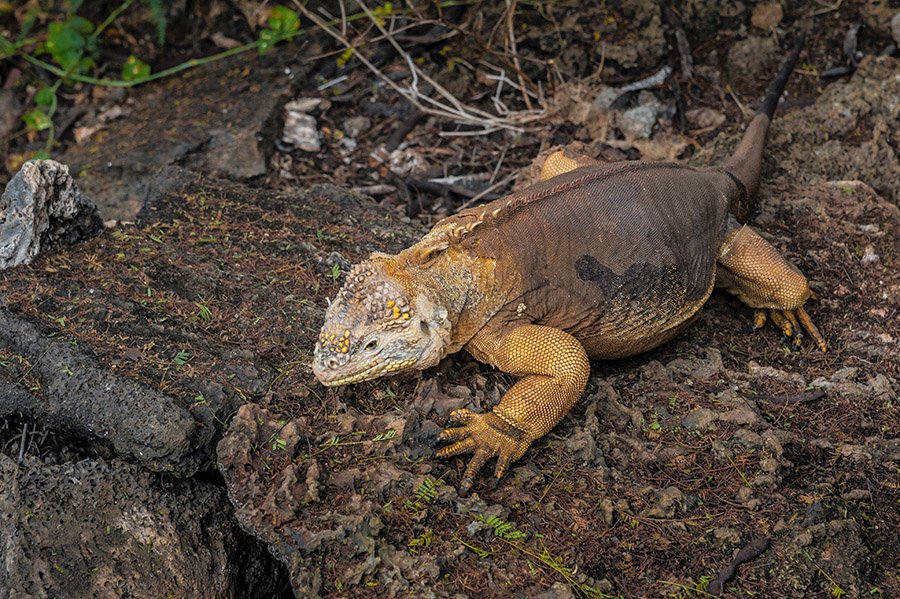
Galapagos Land Iguana
Charles Darwin described these iguanas (Conolophus subcristatus) as “ugly animals,” and indeed, they are a sight to “unbehold”. They have neither vibrant colors nor remarkable features, preferring to bask in the sun on rocks than climb surfaces.
Their diet is primarily vegetarian, but they also eat insects like centipedes and decaying flesh.

Grand Cayman Blue Iguana
Weighing as much as 30 pounds and reaching 5 feet long, the blue iguana (Cyclura lewisi) is breathtaking. Their sheer size and distinct coloration sets them apart, especially the blue tint on their head, which gives them their name. When in danger or as a show of dominance, the blue coloration increases in intensity.
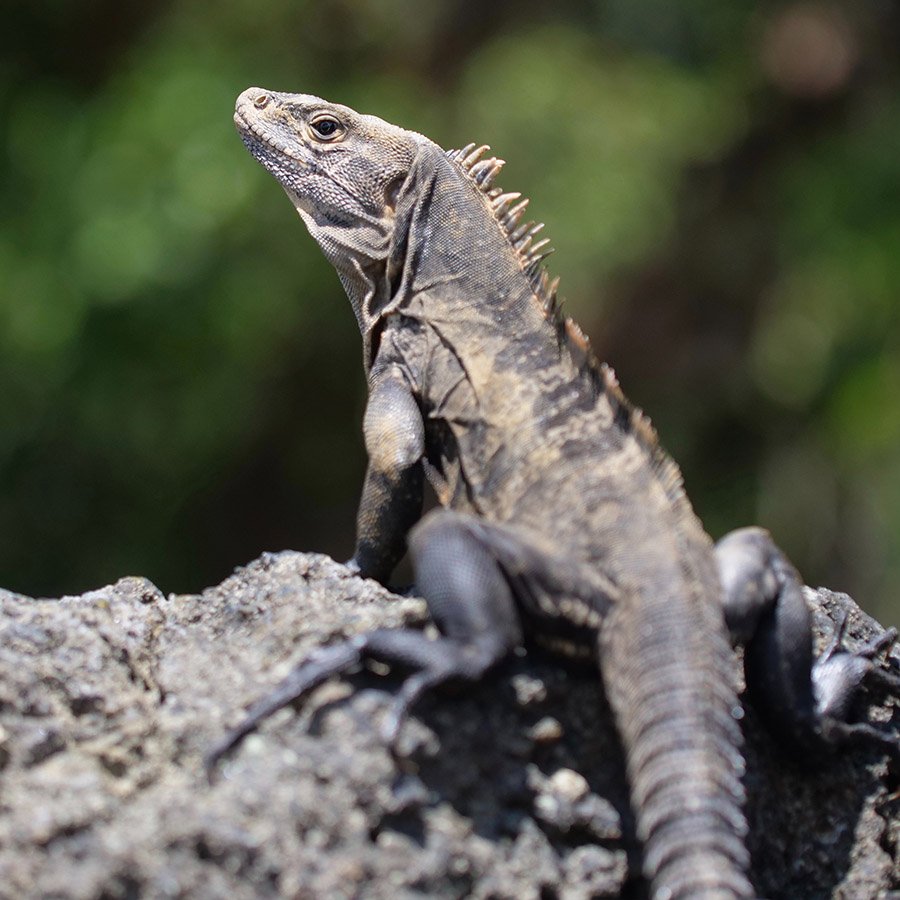
Spiny-Tailed Iguanas
The spiny-tailed iguana is also called ctenosaura and is one of the smallest iguana species. They can grow up to 39 inches long and are identified by the enlarged spiny scales on their tails.
Common Chuckwalla
The common chuckwalla (Sauromalus ater) is native to the Sonoran and Mojave Deserts. It is a large, flat-bodied iguana that prefers to stay away from humans. They are diurnal creatures growing to 20 inches long and 2 pounds in weight.

Galapagos Marine Iguana
These iguanas (Amblyrhynchus cristatus) are unique in their amphibious lifestyle as they are the only iguanas that need water bodies to survive. They are agile swimmers found only on the Galapagos Islands and feed on seaweed. They expel the marine salt from their bodies through their nostrils.
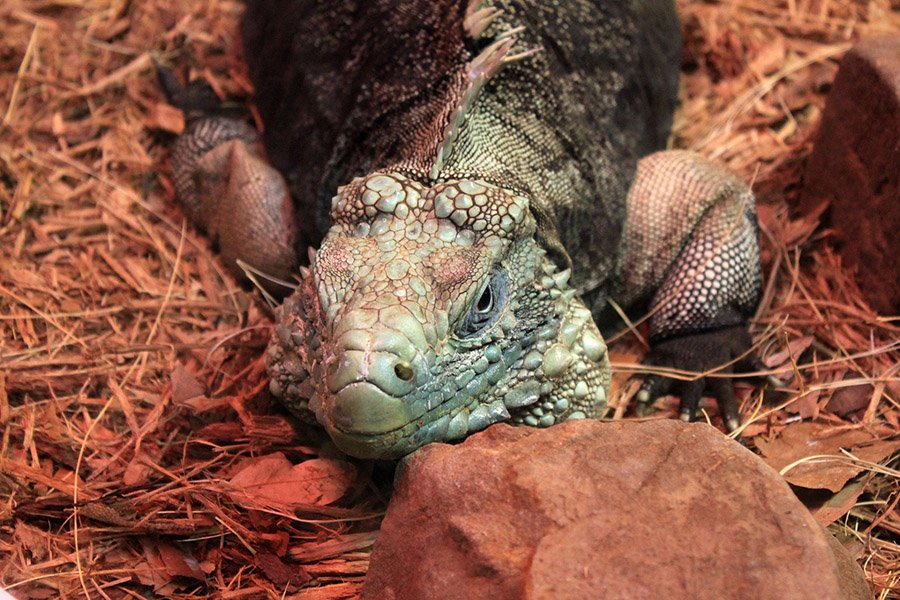
Cuban Rock Iguana
The Cuban rock iguana (Cyclura nubila) is the second-largest lizard in the West Indies and is native to Cuba. It is a critically endangered species, and efforts are being made to save them from extinction.
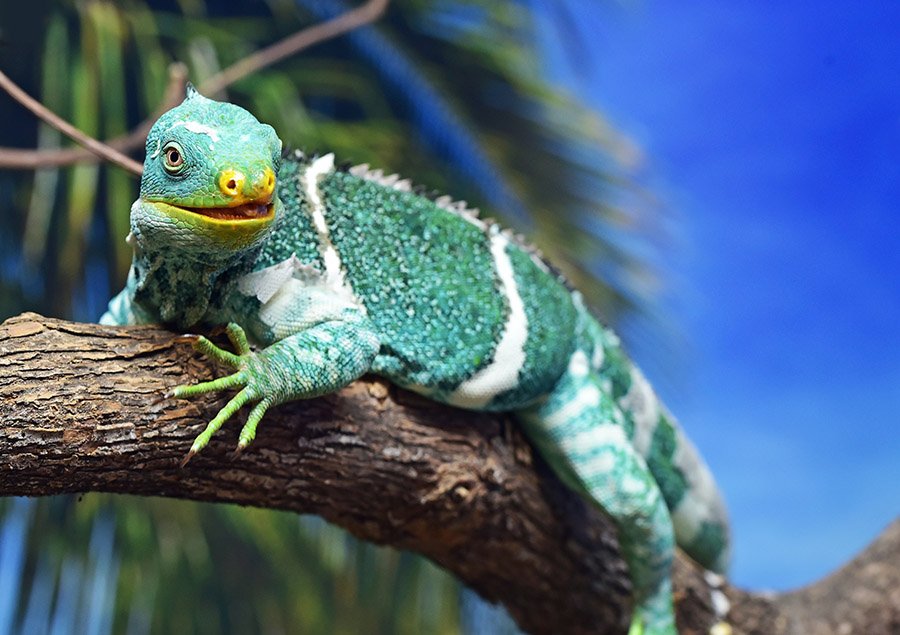
Fiji Crested Iguana
In the past, the Fiji crested iguana (Brachylophus vitiensis) was found on 14 Fijian islands, but today, 98% are found on the island of Yadua dua. Their critically endangered status results from loss of habitat and predation by alien species like black rats and feral cats.
They are omnivores and prefer lofty tree tops where their emerald-green skin keeps them camouflaged.
Frequently Asked Questions
How Many Types of Iguanas Are There?
The iguana family Iguanidae consists of eight genera, of which there are 30 species in total. These species can be found in different countries across the globe.
What is the Smallest Iguana?
The smallest iguana is the spiny-tailed iguana or Ctenosaura. Also called Ctenosaurs, they are native to Central America and Mexico. The spiny-tailed iguana ranges between 2.9 inches to 39 inches in length and consists of 15 recognized species.
What is The Best Type of Iguana for a Pet?
The green iguana is easily the best pet iguana for pet owners. It is the most common and popular iguana species, and according to Reptile Magazine, at least one million green iguanas are imported into the US annually.
They weigh 20 pounds and can grow up to 7 feet long, making them the longest iguanas in the world. Most owners consider them to be both intelligent and affectionate, and they are capable of recognizing their owners.
What is The Largest Iguana Species?
The green iguana is also the largest iguana species on Earth. Although the average length is 4-5 feet, some individuals can reach 7 feet! A significant portion of their size comes from their tail which is three times their snout-to-vent length.
What is The World’s Biggest Iguana?
Although no specific individual is listed as the world’s biggest iguana, in 2018 a six-foot green iguana was rescued and saved from life-threatening wounds caused by crossbow arrows. The iguana was subsequently named Godzilla.

